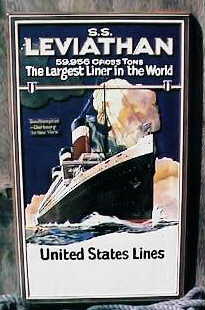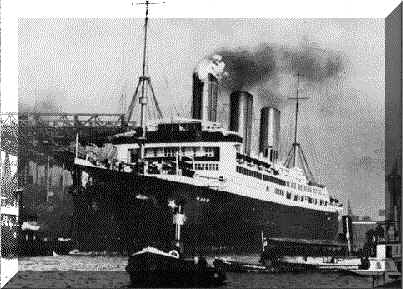|
| |

The United States Line
grew out of the United States Shipping Board, a First World War Federal Agency. The board
managed vessels seized from Germany, including Hamburg - Amerika's Vaterland, now renamed
Leviathan. After the war it was decided to use the liner to gain the US a share of the
traditionally European-dominated Atlantic passenger trade. Hamburg - Amerika,
understandably upset over the seizure of their liners, demanded $1,000,000 for a copy of
the plans for the ex-Vaterland. Rather than pay, the team of American naval architects
designing her conversion, under the direction of William Francis Gibbs, made measured
drawings of the entire vessel. In 1923, she became the first large American luxury liner
on the North Atlantic run since the days of the ill-fated Collins Line in the
mid-Nineteenth century.
Leviathan was not a great success. The lack of an
established tradition on the run, a similar running mate and American Prohibition laws
keeping her dry combined to alienate many Americans and most Europeans. By the depression
years, she had been reduced to bargain basement cruises. The rules about alcohol aboard
American flag vessels was changed in the waning years of "the great thirst" and
the Leviathan suffered the indignity of being used for weekend "Booze Cruises to
Nowhere". After the repeal, even this option was lost and she sat rusting at her pier
for over three years, sailing to breakers in Scotland in 1938.

|